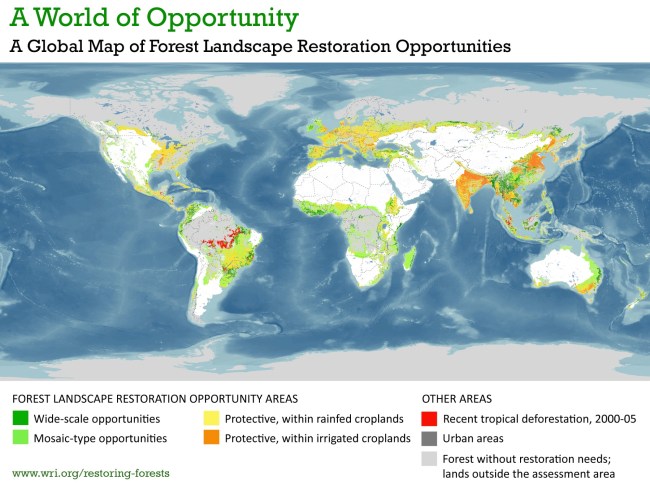 When you follow the news on a daily basis, it can be easy to surrender yourself to the gloom of the future being presented. Wars rage around the world, fossil fuels are quickly running out, and natural disasters paint a picture of an increasingly bleak future for the human race. But there is hope.
When you follow the news on a daily basis, it can be easy to surrender yourself to the gloom of the future being presented. Wars rage around the world, fossil fuels are quickly running out, and natural disasters paint a picture of an increasingly bleak future for the human race. But there is hope.
Humanity has not been kind to the forests of the world. Through deforestation stemming from the need to clear land, to cutting forests in order to use them for various byproducts, three-quarters of the world’s forests have be cleared or degraded due to human involvement. While some of those forest areas have seen some attempts at reforestation, the percentage is frighteningly small. But there is hope for the future, according to the International Union for Conservation of Nature (IUCN), who have released a map showing where 1.5 billion hectares of forest– an area that would roughly equal all of Russia– could be replanted.
“These are 1.5 billion hectares where opportunities could be found,” Carole Saint-Laurent, IUCN’s senior forest policy advisor said in an interview with CNN.
“More analysis needs to be carried out to find what’s really possible within that, because we haven’t been able to map land rights, and there might be areas that are not suitable from a social point of view.
“Even if you took out a third, it’s still a vast area and a vast opportunity.”
The idea would be to work in conjunction with current reforestation plans. New research from the Global Partnership of Forest Landscape Restoration (GPFLR), South Dakota State University and the IUCN have produced a new world map (above) that shows areas with potential for undertaking huge reforestation projects.
With the world’s forests dwindling, the map outlines areas that show the characteristics for new forest growth. In many cases that would mean repairing exiting forests and woodlands that have begun to degrade, or adding forests to areas that are currently not being used for anything.
The map is the first of its kind, and outlines proactive steps to help prevent the further loss of the world’s forest. It is in no way a fix to the damage done to the forests of the worlds, but it is the first step in showing us how we may begin to correct the damage to the planet.
“Over a 30-year-period we believe this could have as much benefit as avoided deforestation.”
Two of the largest areas that could conceivably receive new forest lands would be in Africa and Asia, where each continent could potentially offer 500 hectares a piece. If those areas could begin to see reforestation, it could help counteract the huge sections of forests that continue to disappear at an alarming pace, such as in South America and Indonesia.
The IUCN map is a call to arms for groups that are looking for ways to help combat the disappearing forests of the world. It would take the involvement of local communities and conservation group. But with a concerted effort, the forests of the world may be able to make a comeback. Good news for those of us that live on the planet.
“We know it can be done. There are people all over the world who are doing it already.”
[Updated: Thanks to our readers Jon and Sterling for pointing out a few typos. The article has been corrected accordingly.]


